Introduction
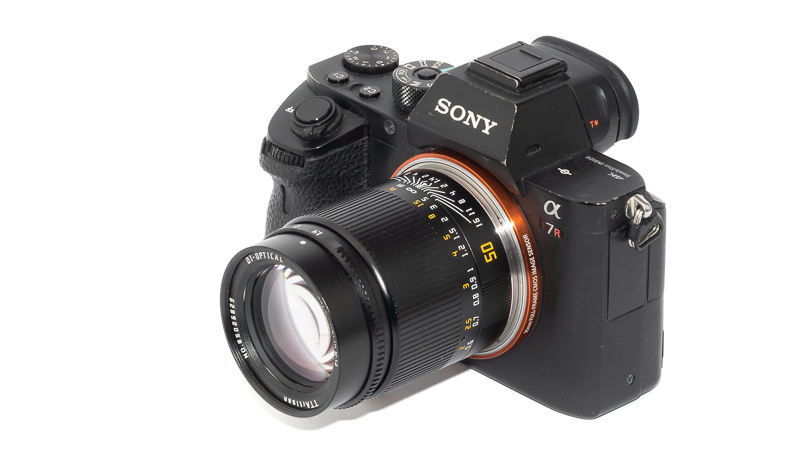
The TTArtisan 50mm 1.4 M is one of my favorite affordable modern manual focus lenses, now after the M-mount version we are getting a native (and cheaper!) E-mount version.
What has changed? Optically: nothing, mechanically: a bit, MSRP: a lot. So let us have a closer look which makes more sense to get as an E-mount user.
This lens is optically the same as the M-mount version so I will reuse many sections of my review of the M-mount version here.
Sample Images
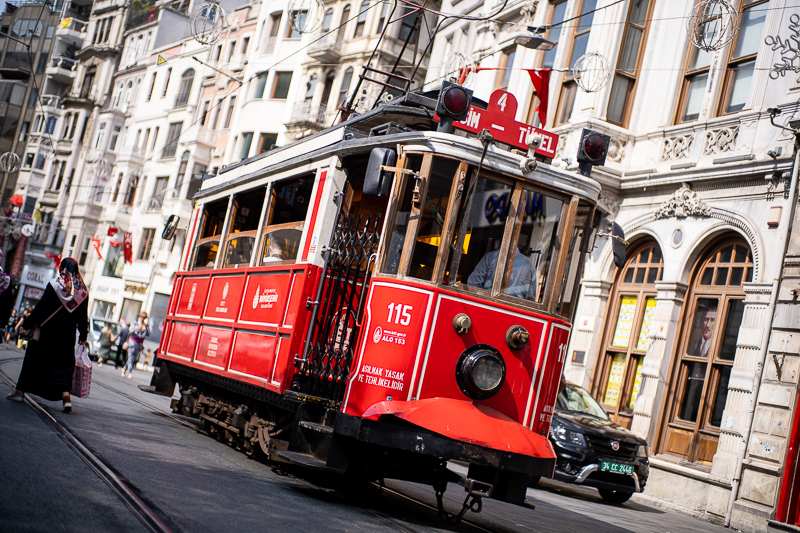

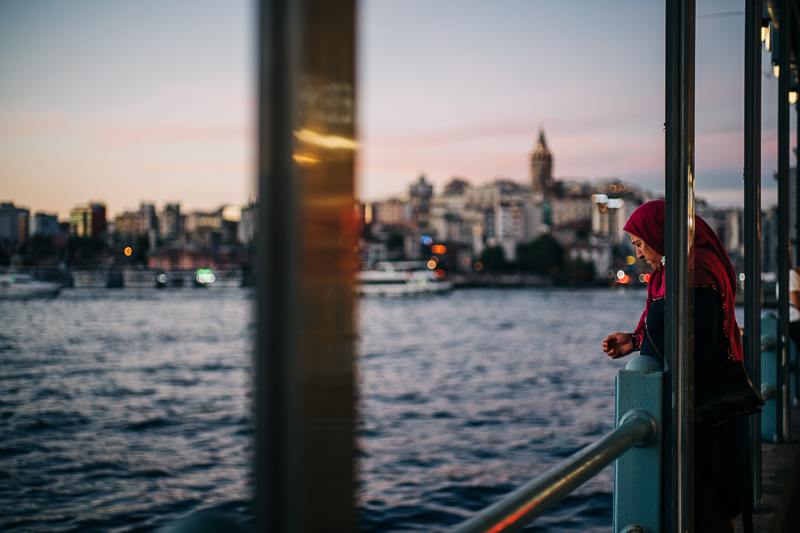
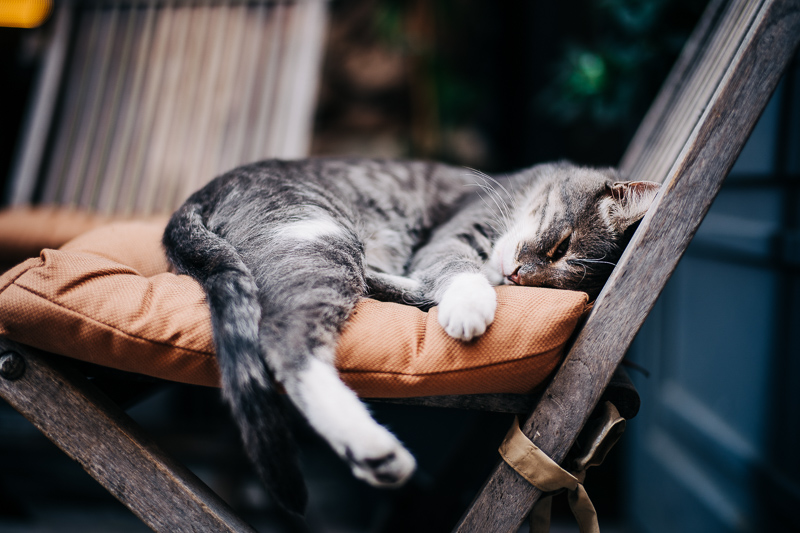
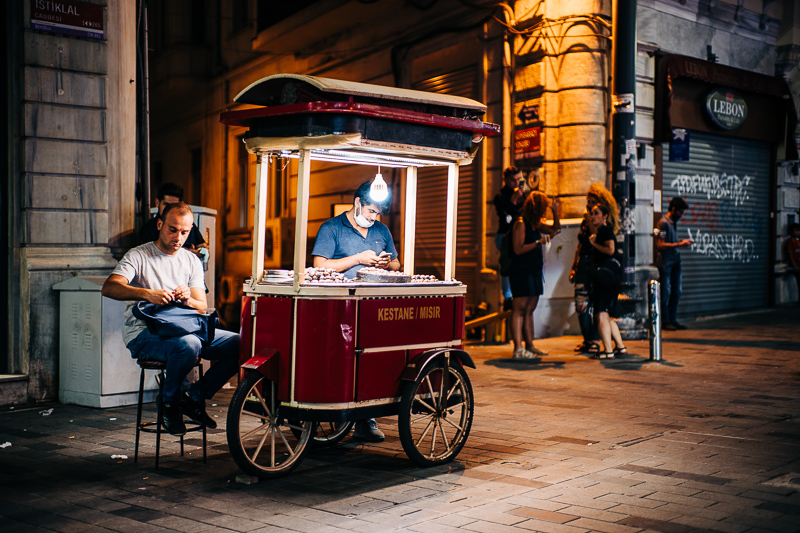
Most of the sample images in this review can be found in full resolution here.
Contents
Specifications
The new E-mount version is very similar to the M-mount version. Notable changes: 30g heavier and minimum focus distance 0.5 m instead of 0.7 m. Full specifications of the new lens are:
-
- Diameter: 60 mm
- Field of view: 47° (diagonally)
- Length: 68 mm
- Weight: 432g (without hood and caps)
- Filter Diameter: 49 mm
- Number of Aperture Blades: 12 (straight)
- Elements/Groups: 10/8

- Close Focusing Distance: 0.5 m
- Maximum Magnification: 1:7.7 (measured)
- Mount: Sony-E
You can usually buy this lens from the manufacturer’s shop, onamazon.com/amazon.de, B&H or ebay.com/ebay.de for about $235 (affiliate links)
Disclosure
The TTArtisan 50mm 1.4 E was kindly provided free of charge by TTArtisan for reviewing purpose for a duration of 4 weeks.
Handling / Build Quality
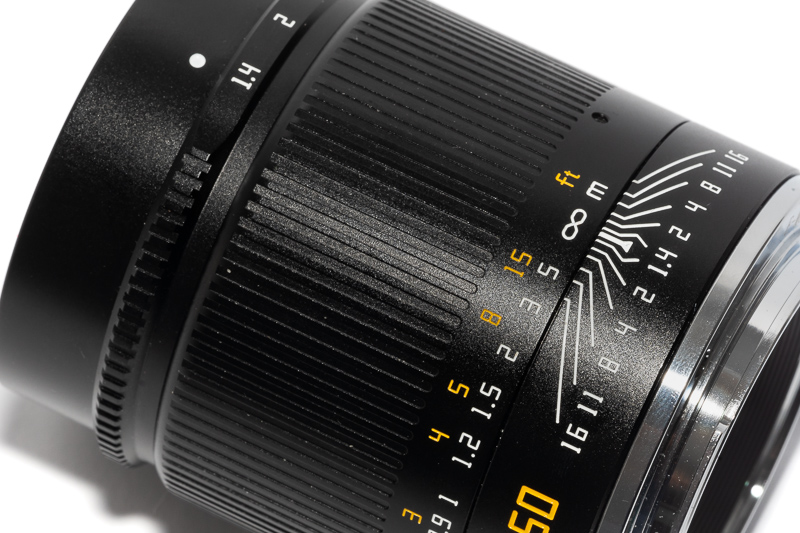
From the outer apperance the new E-mount version looks even more like a Leica M lens than the M-mount version due to using fonts more closely resembling the Leica ones. Markings are yellow/white (engraved and filled with paint), the focus ring has a nice albeit not perfectly even resistance and turns about 160° from the minimum focus distance of 0.5 m to infinity. There is no focus tab like on the M-mount version.
The aperture ring has equidistant and very distinct half-stop click stops and feels very tightly assembled.
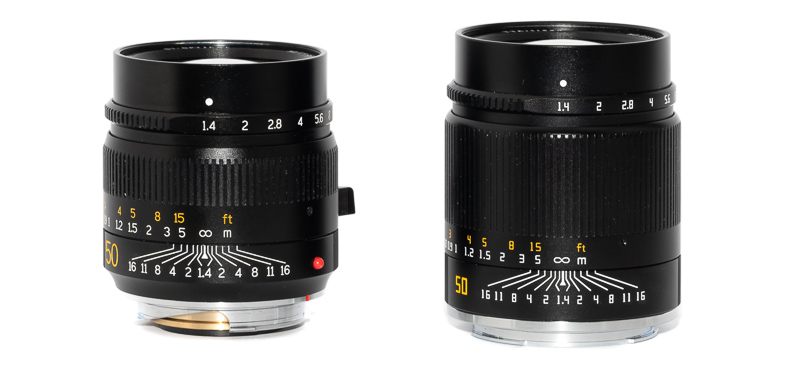
There is again no hood included in the package and the lens also does not feature electronic contacts to communicate with your camera.
Update July 2023:
A reader sent me this picture of his newly acquired TTArtisan 50mm 1.4 E lens. It features a different casing styling with all the writings being white and it seems like all the markings are now printed only. Apart from that optics and mechanical design remain unchanged.

Vignetting
light falloff
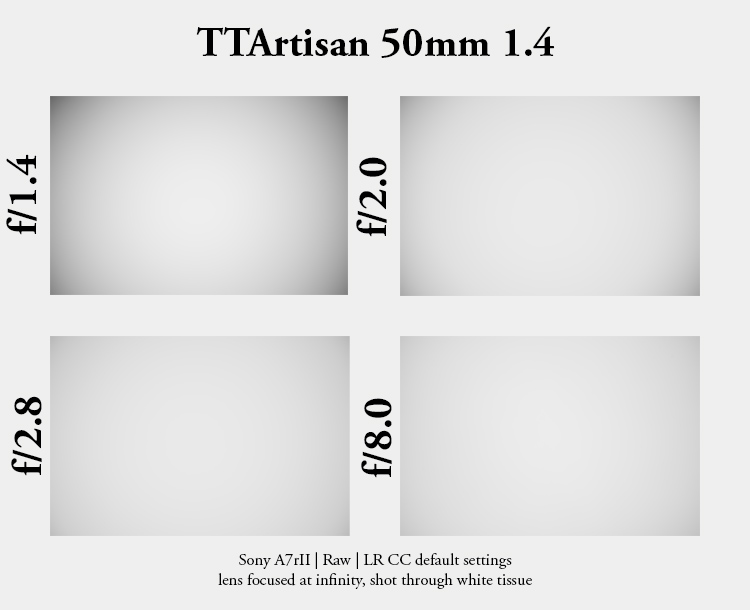
Wide open there is strong light falloff of roughly 2.7 EV in the extreme corners, stopped down to f/2.0 this improves to 1.9 EV, stopped down to f/2.8 it is 1.4 EV and further improves to 1.3 EV at f/8.0.
Stopped down these values are comparable to other small yet fast 50mm lenses like the Voigtlander 50mm 1.2 Nokton, at wider apertures the TTArtisan lens is slightly better (by about ~0.3 EV).
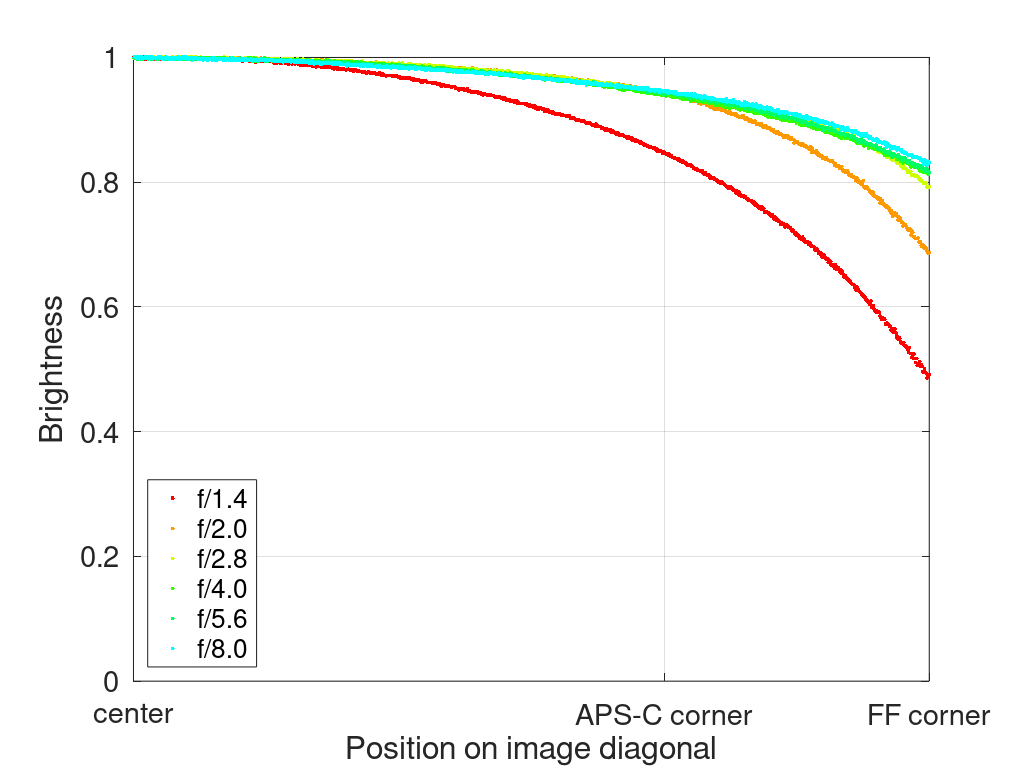
It is recommended to have a look at this article first to get an idea how this brightness graph works.
optical vignetting
Very fast yet compact lenses usually show a significant amount of optical vignetting. Without going too much into technical details optical vignetting leads to the truncation of light circles towards the borders of the frame.
In the center of the frame almost every lens will render a perfect circle, but only lenses with very low optical vignetting will keep this shape in the corners.
So in the following comparison we move from the center (left) to the extreme corner (right) and see how the shape of the light circle changes.
For comparison’s sake I included the Voigtlander 50mm 1.2 here. I consider this performance average for a lens with these parameters. You can clearly see some onion ring structures caused by the use of aspherical elements though, these are still noticeable with the E-mount version.
I did not shoot both lenses side by side, if I did the circles from the f/1.2 lens would be bigger in direct comparison. The focus distance was 0.7 m and you may get slightly different results at other distances.
Sharpness
infinity (42mp Sony A7rII)
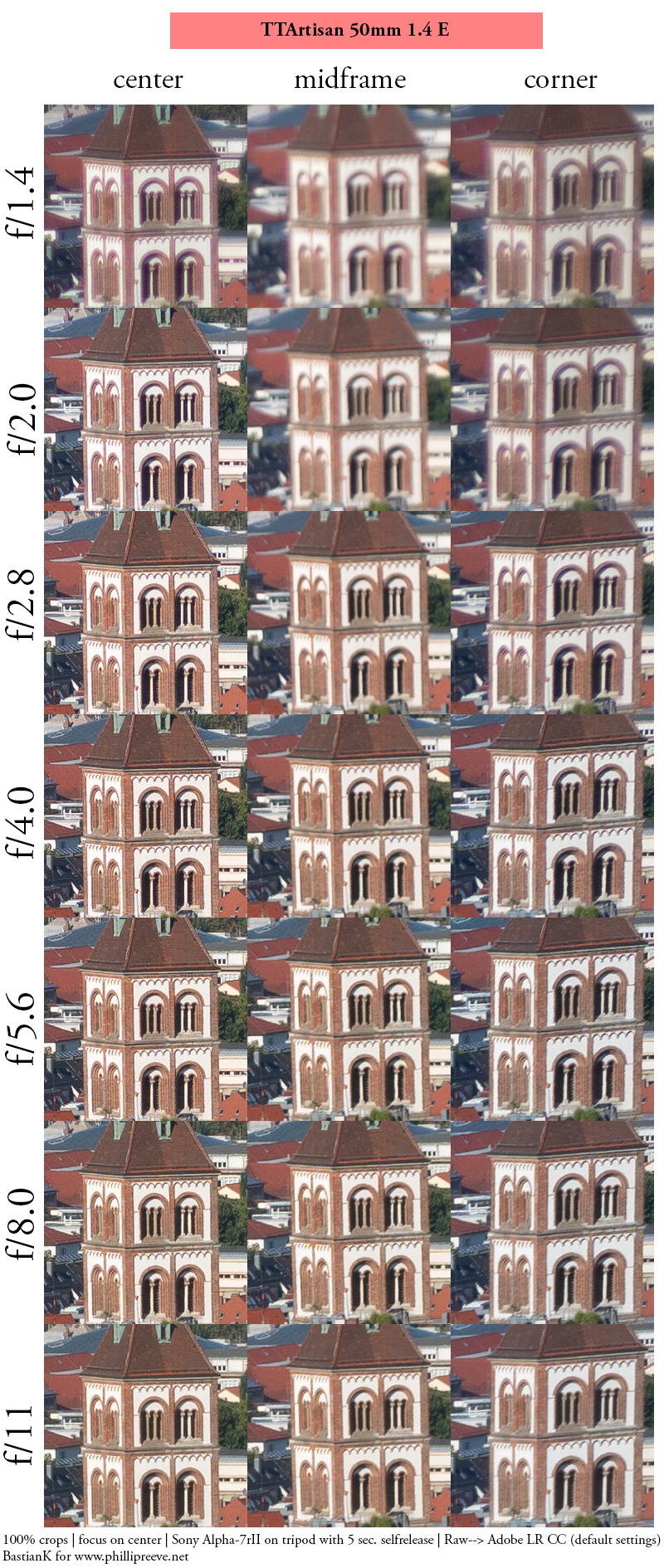
At infinity the TTArtisan 50mm 1.4 is a bit soft at the maximum aperture even in the center, but this improves significantly on stopping down to f/2.0. Midframe and corners are nothing to write home about at wider apertures, but from f/4.0 onwards the across frame performance is very even. Therefore – stopped down to f/5.6 to f/8.0 – the lens is also a good choice for landscape or architecture infinity shooting, this is rare among small yet fast M-mount lenses.
The performance here reminds me a lot of the 7Artisans 28mm 1.4, which is good news.
There are no changes here compared to the M-mount version.
portrait distance 2.0m distance (24mp Sony A7III)
For portraiture it isn’t so important how flat the field is, it is more interesting to see what the sharpness is like when focused at different parts of the frame to take field curvature out of the equation.
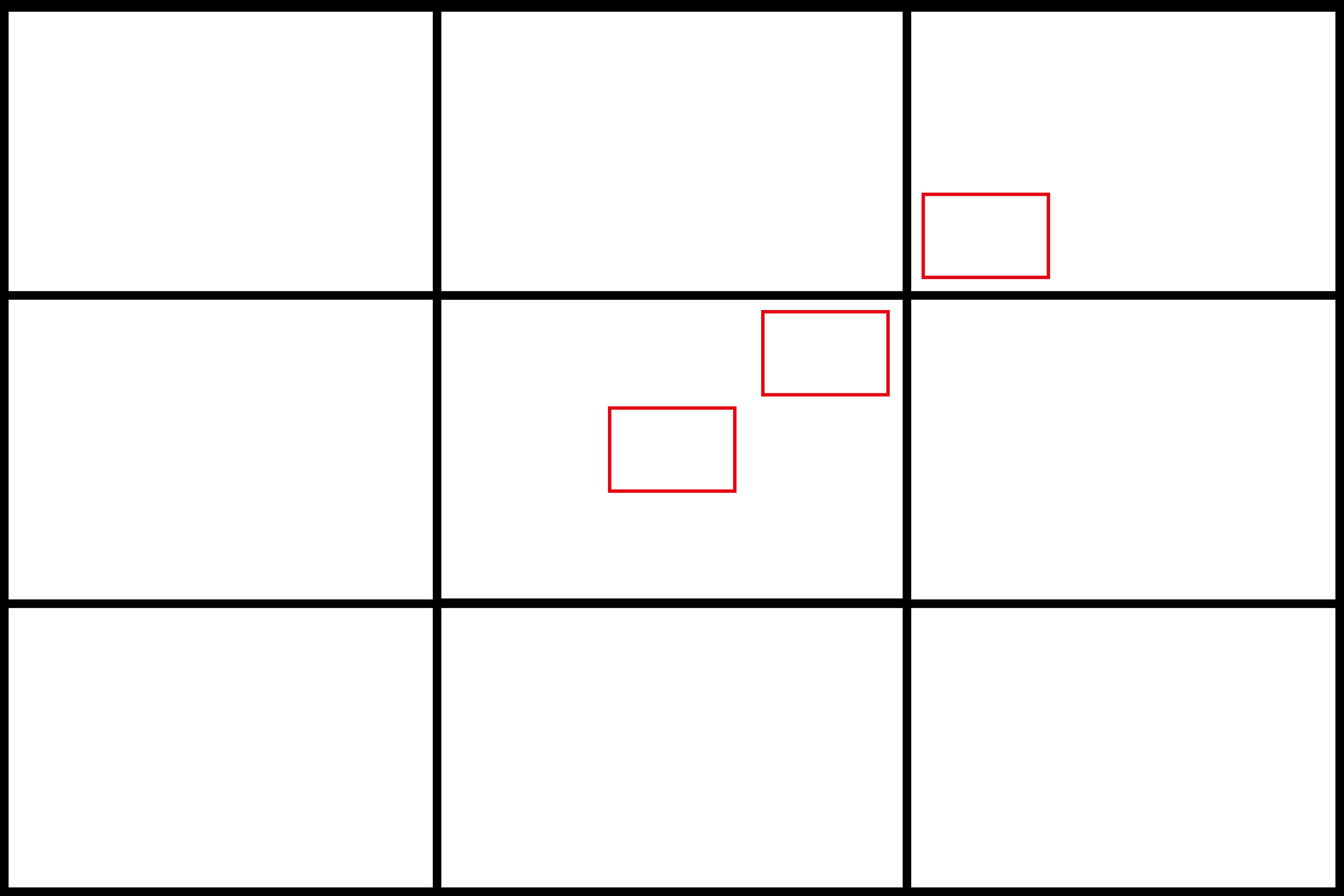
We will be looking at 100% crops from the 24mp Sony A7III.
Sony A7III | TTArtisan 50mm 1.4 E | f/1.4
The outer midframe shows a worse performance compared to the center and inner midframe, but it still is a decent performance and I did not encounter any issues in the field.
close (0.50 m, 1:7.7, 42mp A7rII)
100% crops from center, A7rII, refocused for every shot
The M-mount version had a minimum focus distance of only 0.7 m and showed a surprisingly good performance for a fast lens without floating elements at the maximum aperture.
Now the minimum focus distance has been improved to 0.5 m for the E-mount version but this came at a price: at 0.5 m stopping down to f/2.0 is a good idea to get rid of most of the spherical aberration. Still, I gladly take the ability to focus a bit closer.
Flare resistance
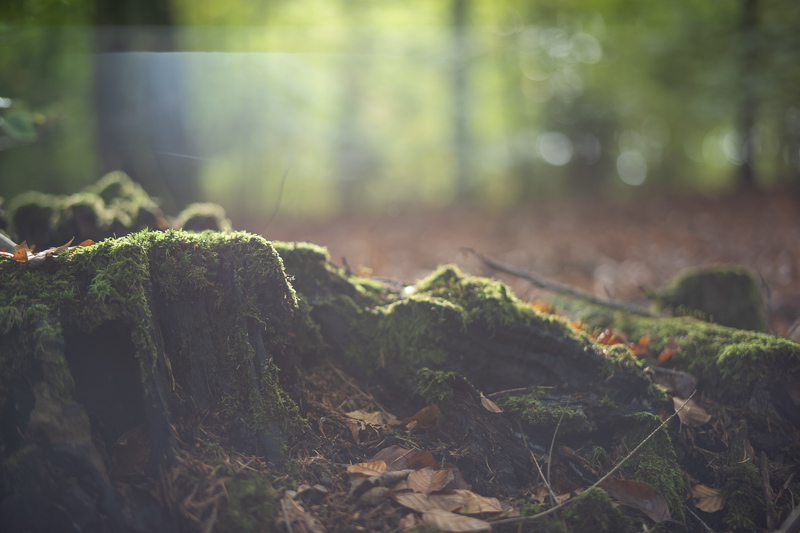
The TTArtisan 50mm 1.4 does not ship with a hood, but I think it would have been useful, as the lens has quite some issues with stray light. It is pretty easy to catch some distinct bars running through your picture, this might be caused by internal reflections.


At maximum aperture you can also encounter a significant ring flare (internal reflections) with strong point light sources in the frame:
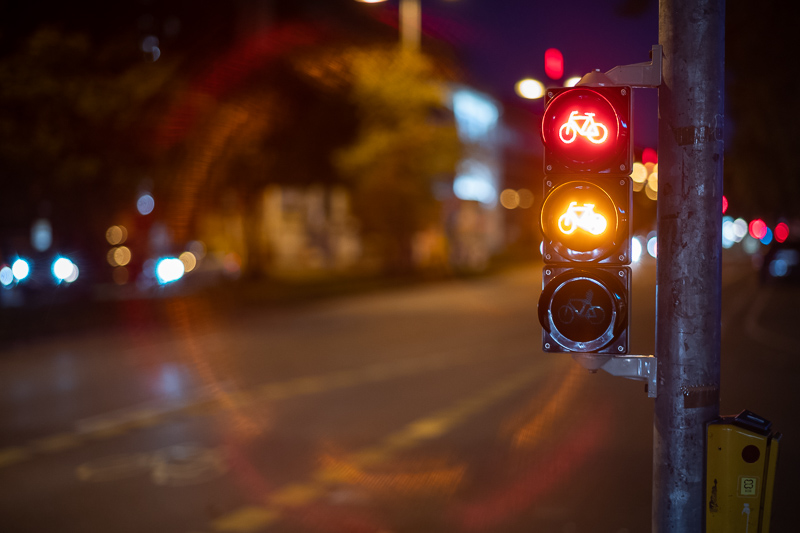
Stopping down to only f/1.7 makes it go away completely:
Sony A7rII | TTArtisan 50mm 1.4
This is true for the E-mount version as well, no changes here.
The lens does not have any severe issues with ghosts, so if you can avoid stray light and you stop down you can often shoot straight into the sun without encountering major issues:

Coma
At f/1.4 and f/2.0 there is noticeable coma visible. Stopping down to f/2.8 improves the performance significantly, but to completely get rid of it you have to stop down to f/4.0 to f/5.6.
Performance is not that different from the Voigtlander 50mm 1.2 or other small yet fast lenses, so I cannot complain here.
100% crops from extreme corner, focused on center, A7rII
Distortion
Leica M10 | TTArtisan 50mm 1.4 | f/8.0
The TTArtisan 50mm 1.4 shows moderate pincushion distortion. There is no lens profile available yet, but dialing in -4 in Lightroom/Camera Raw is doing a pretty good job at correcting it. If you look very closely you may see remains of a wavy sub frequency, but this should hardly be field relevant.
Bokeh

Most people interested in this lens are probably looking for a portrait/streetphotography lens, so bokeh may be an important factor. Generally we can choose from plenty 50mm lenses these days, but in my opinion not many of those offer a smooth and undistracting bokeh rendering.
The optical design gave me a bit of hope though, so let us have a closer look how the lens behaves at different distances.
Close to the minimum focus distance the bokeh is very smooth (this is true for most lenses):
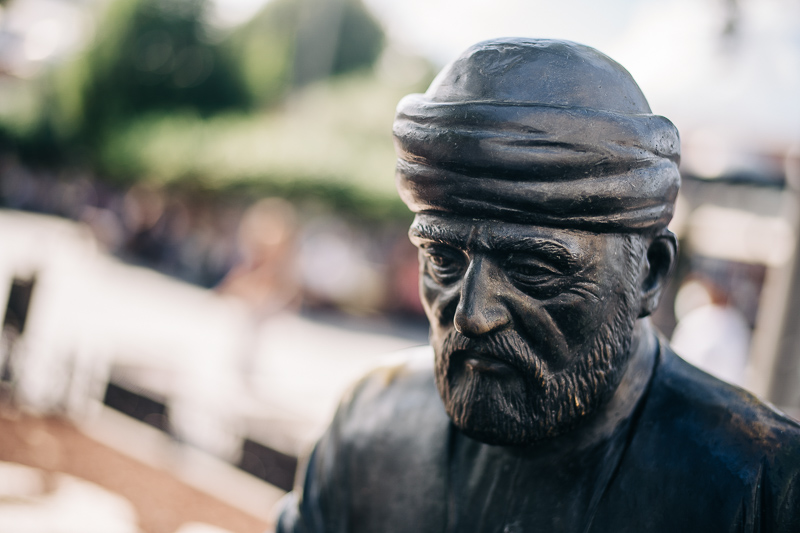
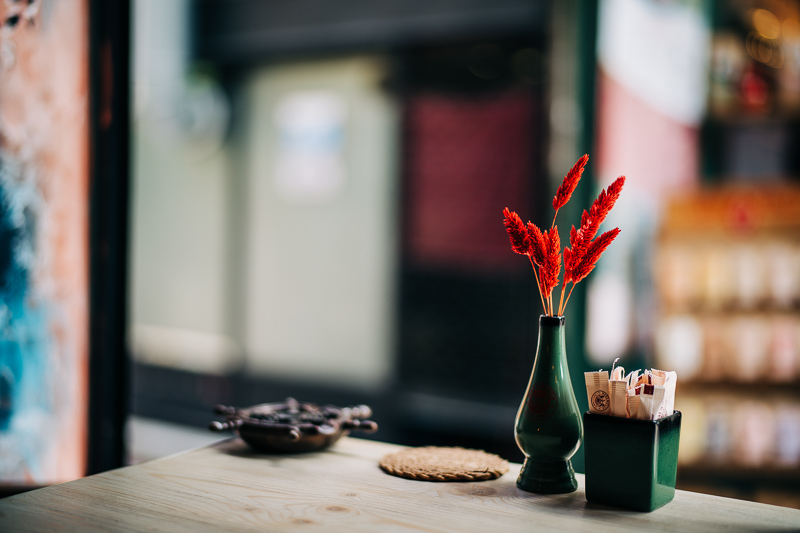

At half body portrait distance (roughly 1.2 to 1.5 m focus distance) the lens yields smooth blur and sharpness as well as contrast are good, exceeding my expecations:


Even at longer focus distances (e.g. at full body portrait distance) and with difficult backgrounds – where many lenses struggle – the TTArtisan 50mm 1.4 is doing a good job.
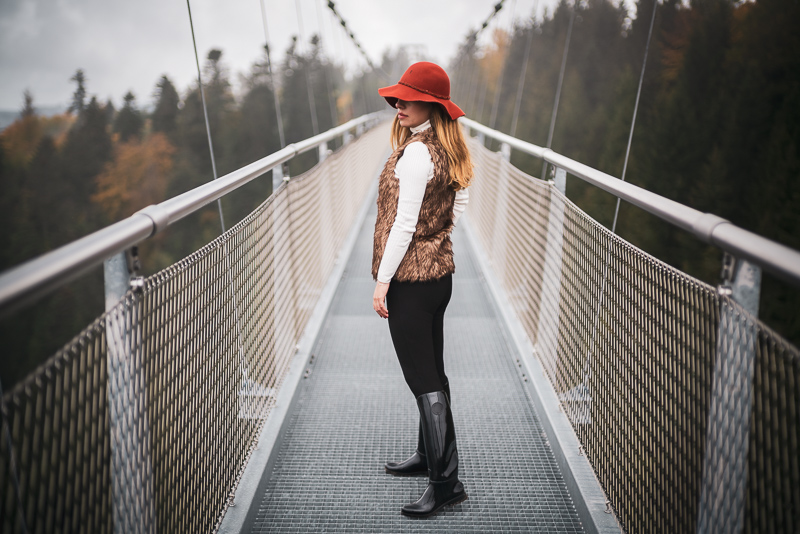
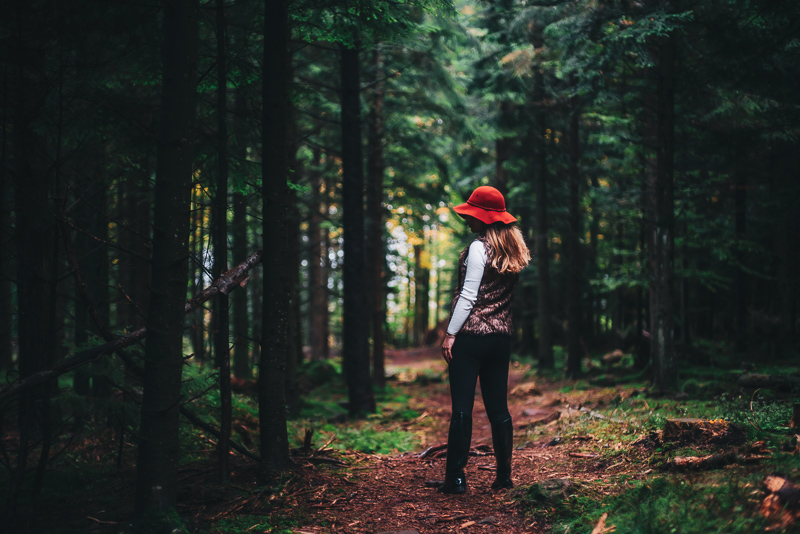
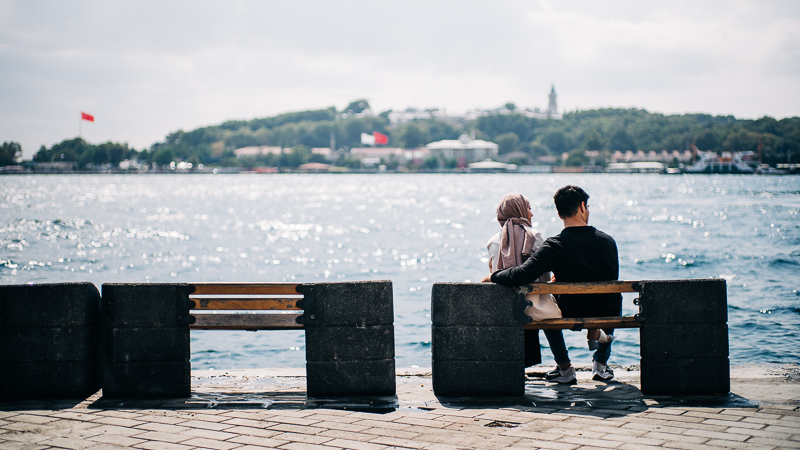
This also holds true with complex backgrounds like foliage:
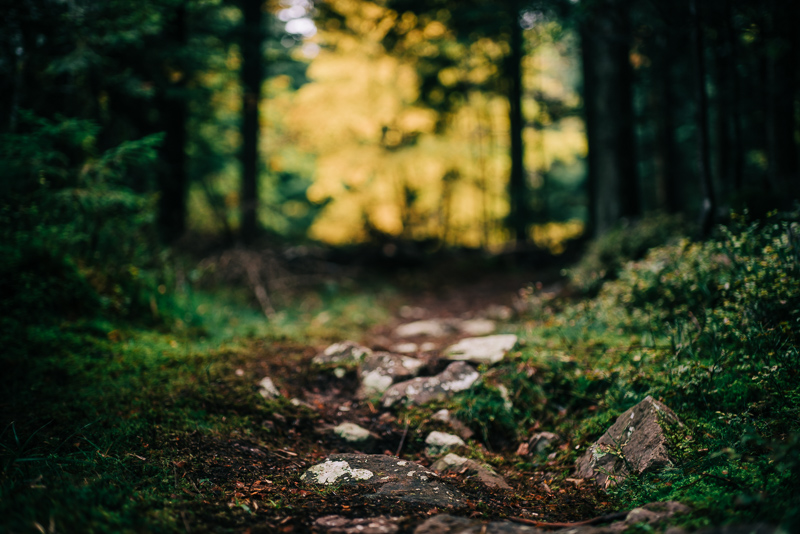
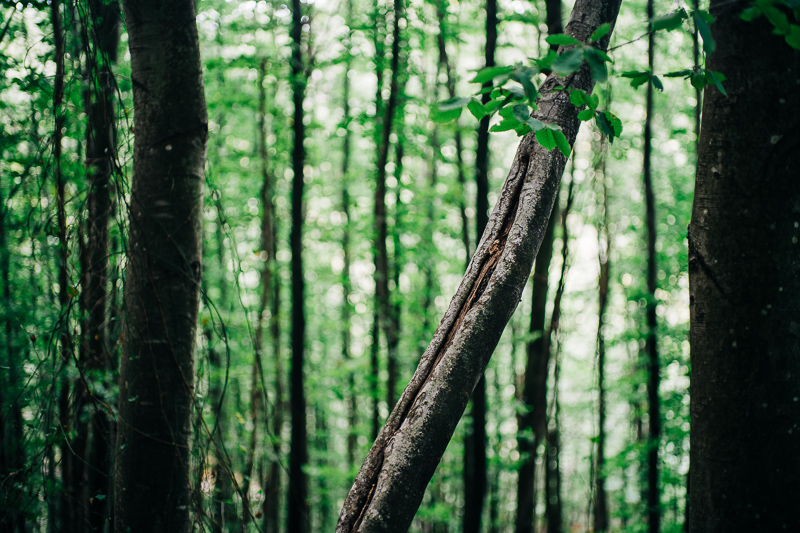
All things considered, I have been very happy with the bokeh rendering of this TTArtisan 50mm 1.4. My favorite small 50mm lens in this regard was (and still is) the Voigtlander 50mm 1.2, but the TTArtisan comes really close.
Sunstars
I cannot really see a clear line when it comes to aperture constructions of TTArtisan lenses yet. Out of 5 lenses I saw 4 different aperture diaphragms. This one features 12 blades and might become my favorite among those, as it yields well defined sunstars between f/8.0 and f/16. The alignment of the blades is not as perfect as it is with Zeiss Loxia or Voigtlander lenses though.
If you want to know more about sunstar rendering of different lenses have a look at this article.
50% crops from center, A7rII
Chromatic aberration
lateral
100% crops from border
There are only minor lateral CA visible that are easily corrected either in camera (for Jpegs) or in a raw developer like Lightroom by one click.
longitudinal
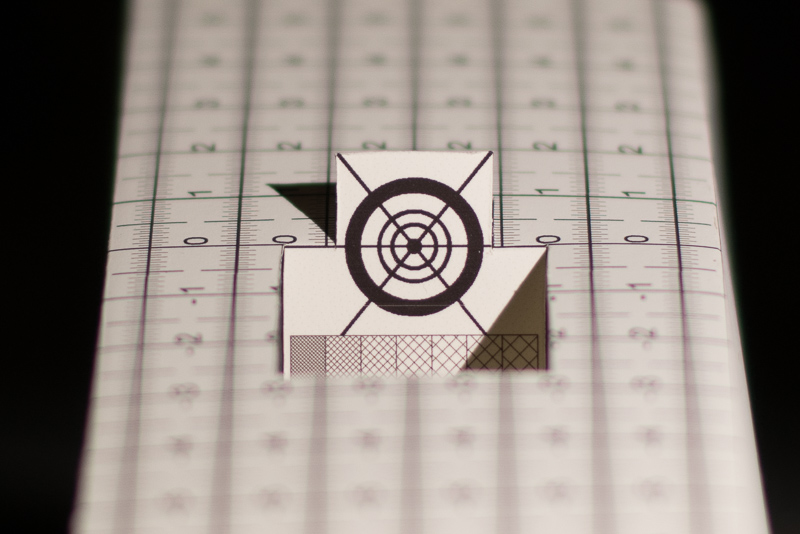
In close up scenarios there is green behind and magenta in front of the focal plane visible. It takes stopping down to f/2.8 to mostly get rid of this aberration (see focus shift section).
As is usually the case with fast lenses purple fringing can be quite pronounced:
Sony A7rII | TTArtisan 50mm 1.4 | f/1.4
In extreme scenes like the one below you can sometimes spot longidutinal CA even in smaller output sizes, but it should be noted that this TTArtisan 50mm 1.4 fares no worse here than e.g. the Sony 55mm 1.8 or the Sony 35mm 1.8, both slower, more expensive lenses.
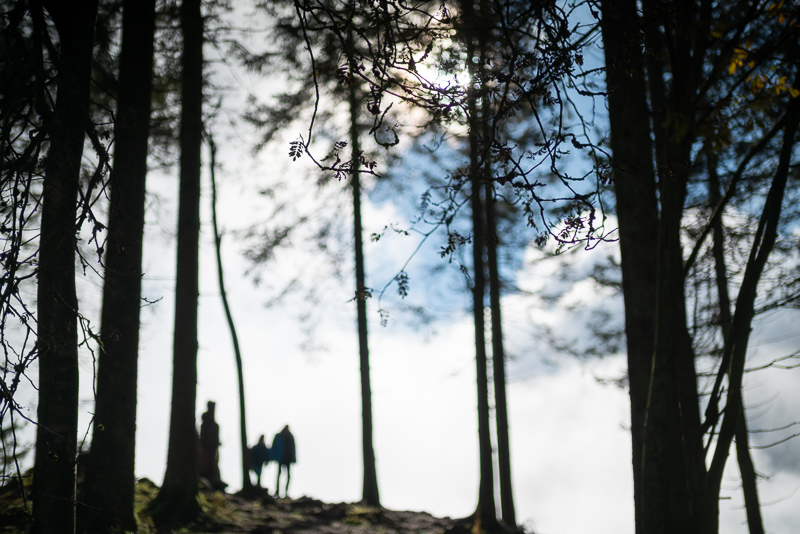
Focus shift
50% crops, A7rII
With some lenses when stopping down the plane of optimal focus shifts to the back or the front. Here the focus shift is minimal and should hardly be an issue in the field.
Alternatives
I will only cover the really obvious alternatives in detail here, but if you ended up here by accident and you are looking for an AF lens may have a look at our Guide to 50mm lenses for Sony E-mount.
E-mount
Voigtlander 50mm 1.2 Nokton E:
The most obvious competitor. You gain electronic communications with your camera, half a stop of light gathering capabilities, better flare resistance and you are loosing a bit of weight. The Voigtlander is slightly worse close to the minimum focus distance and 4 times as expensive though.
buy from CameraQuest | B&H | Robert White | amazon.com | amazon.de | ebay.com | ebay.de for $999 (affiliate links)
Voigtlander 50mm 2.0 APO-Lanthar:
If you are looking for the best possible correction of optical aberrations instead of lots of bokeh this is the lens you are looking for.
buy from CameraQuest | B&H | Robert White | amazon.com | amazon.de | ebay.com | ebay.de for $1049 (affiliate links)
M-mount
Leica Summilux-M 50mm 1.4 Asph:
If you can easily afford the Leica lens I wonder why you are reading this. I have never used this lens personally but I would expect it to do better in certain scenarios like contrast and flare resistance, but I am not so sure about bokeh rendering. Are these possible differences worth spending almost 20 times as much? If you think so consider using one of my affiliate links next time you buy a Leica lens.
buy from amazon.com | amazon.de | B&H | ebay.com | ebay.de for $4.000 (affiliate links)
Voigtlander VM 50mm 1.2 Nokton:
See E-mount version above.
buy from CameraQuest | B&H | amazon.com | ebay.com | ebay.de for $1.059 (affiliate links)
7Artisans 50mm 1.1:
This is a very different lens as it is not optimized to give smooth bokeh at maximum aperture but rather nervous bokeh with lots of field curvature. Does not fit my taste, but may be the cheapest option to get a new very fast 50mm lens.
buy from amazon.com | amazon.de | B&H | ebay.com | ebay.de for $349 (affiliate links)
Conclusion
good
|
average
|
not good
|
What I wrote about the M-mount version holds true for the E-mount version as well:
“Reviewing and using the TTArtisan 50mm 1.4 has been a pleasant surprise as it offers surprisingly good bokeh for a small 50mm lens as well as good sharpness where it matters.
It manages to accomplish something where even some of the fast Voigtlander lenses fail: stopped down it is plenty of sharp across all of the frame, too.
This makes it a great allround 50mm lens that can be used for portraiture as well as landscape and infinity shooting.”
Now the minimum focus distance has been improved to 0.5 m – which is very welcome – but being an E-mount lens now, it would be nice if there were electronic contacts to communicate with the camera.
The price of the E-mount version of the TTArtisan 50mm 1.4 is about 30% lower than that of the M-mount version, so now you are getting 90% of the Voigtlander 50mm 1.2‘s qualities for about 25% of the price. It even competes with plenty of the better legacy 50mm 1.4 lenses in terms of price, in terms of image quality usually surpasses them and you don’t have to deal with the used market, you can buy it with no hassle new from stock.
All things considered: a real bargain if you enjoy using manual focus lenses with high build quality.
You can usually buy this lens from the manufacturer’s shop, on amazon.com/amazon.de, B&H or ebay.com/ebay.de for about $235 (affiliate links)
Sample Images
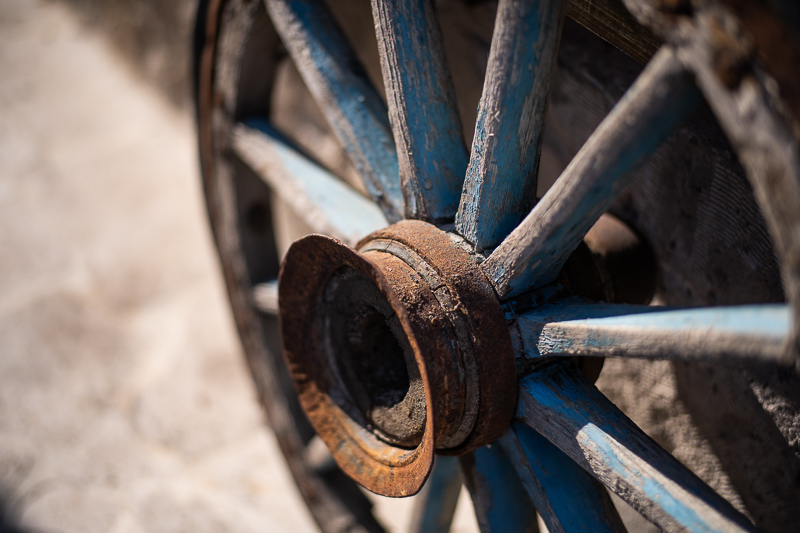

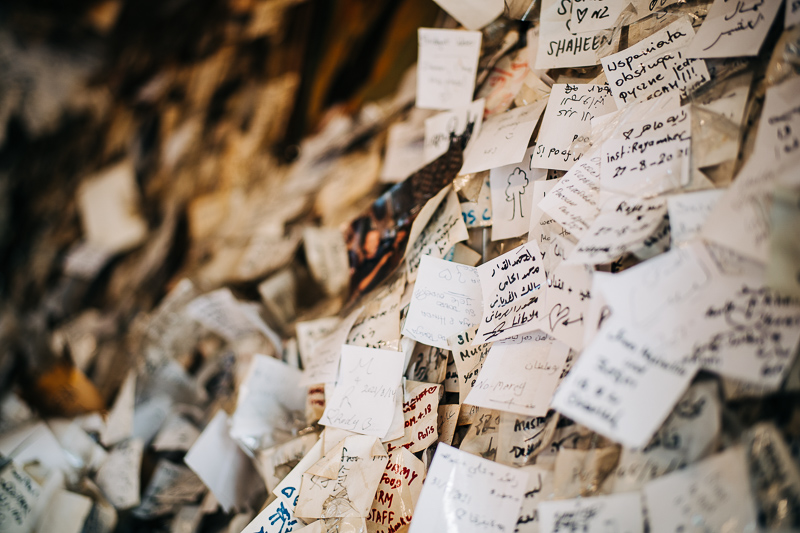
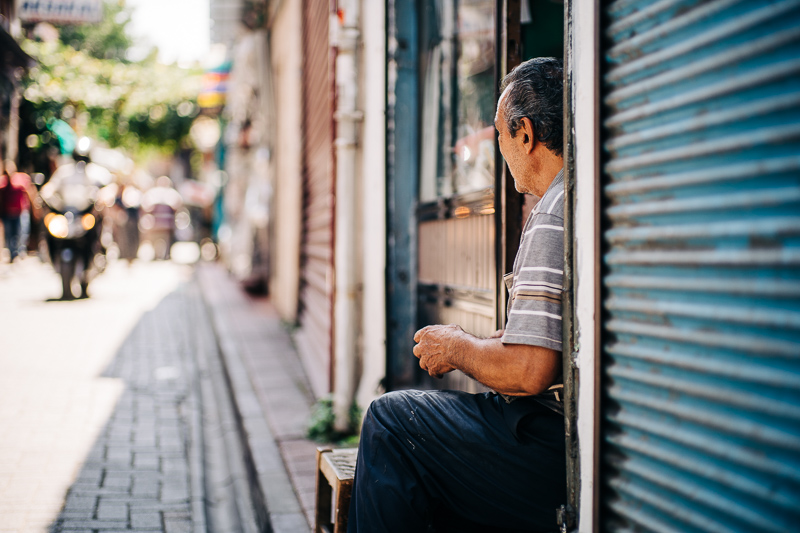
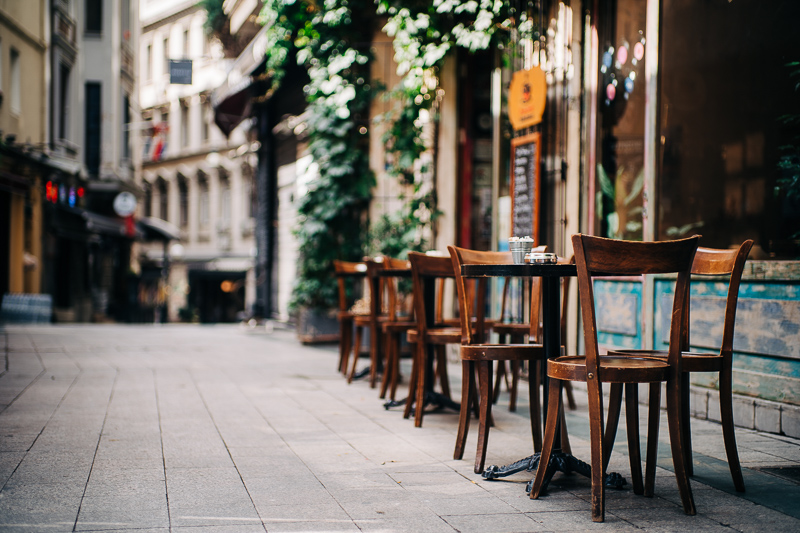
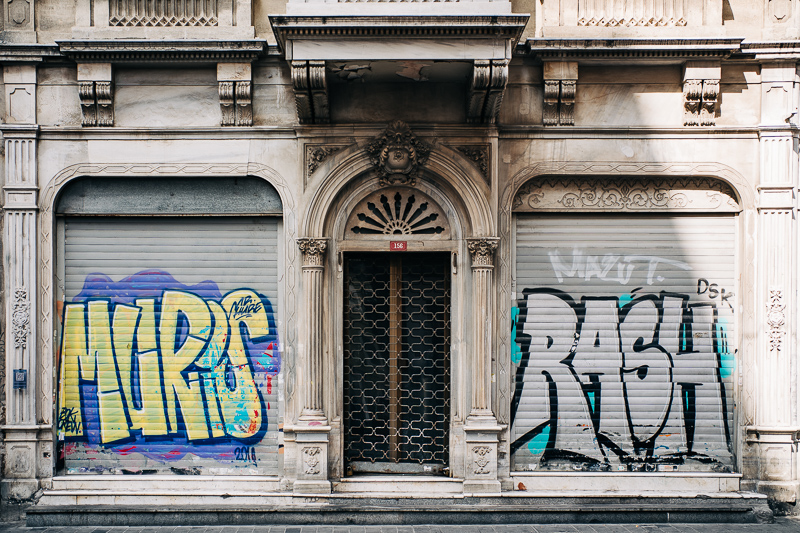
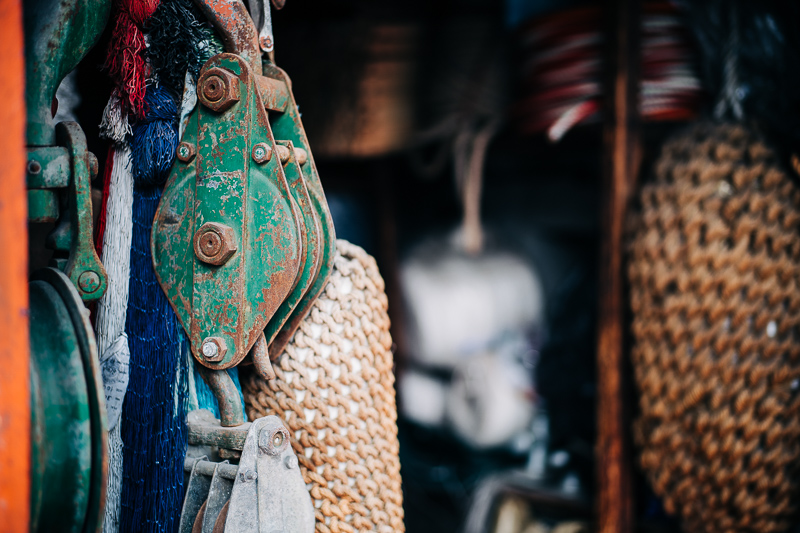



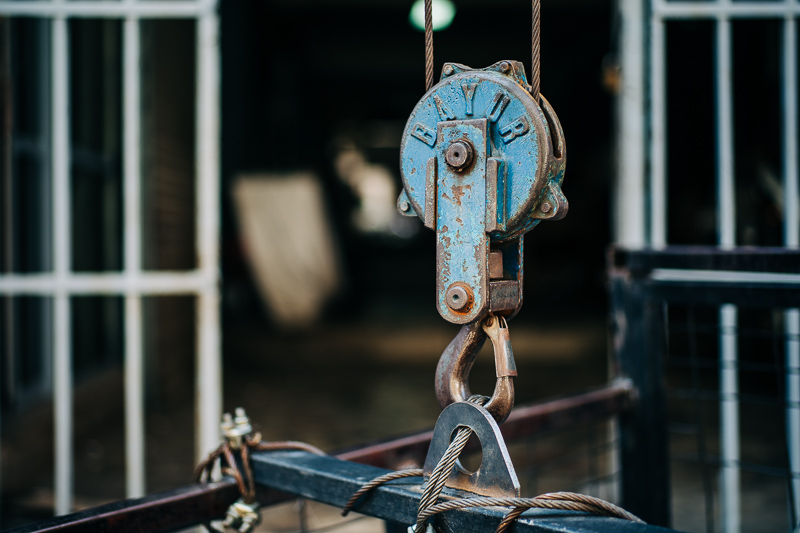
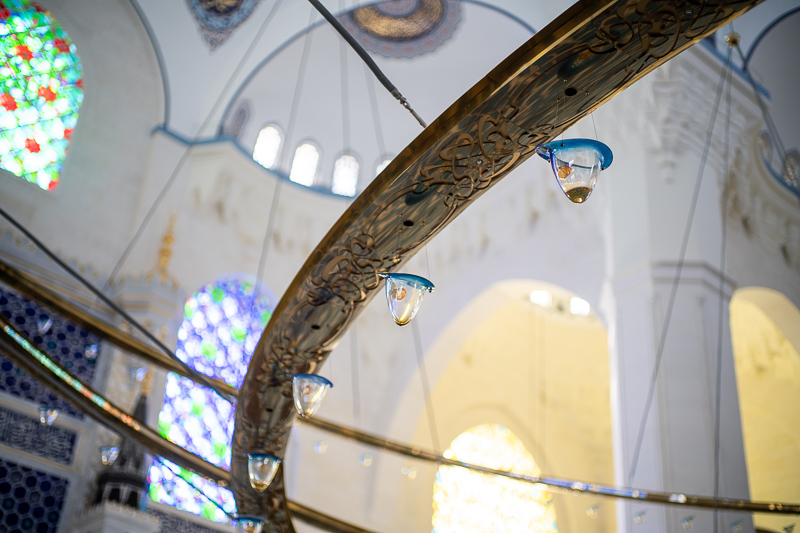

Most of the sample images in this review can be found in full resolution here.
Further Reading
- Sony FE lenses: Our comprehensive and independent guide
- Review: Laowa 9mm 5.6 – The World’s widest lens
- How I edit my pictures
- Review: Zhong Yi 135mm 1.4
Support Us
Did you find this article useful or just liked reading it? Treat us to a coffee!
![]()
![]()
![]() via Paypal
via Paypal
This site contains affiliate links. If you make a purchase using any of the links marked as affiliate links, I may receive a small commission at no additional cost to you. This helps support the creation of future content.
Latest posts by BastianK (see all)
- Review: Canon EF 50mm 1.0 L USM – Still the world’s fastest AF lens - December 30, 2025
- Review: Nikon Nikkor 105mm 1.8 Ai-s - December 28, 2025
- 2025 – Year in Review - December 23, 2025




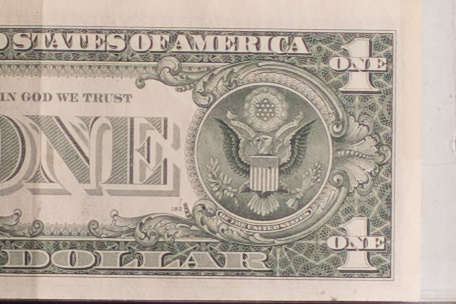









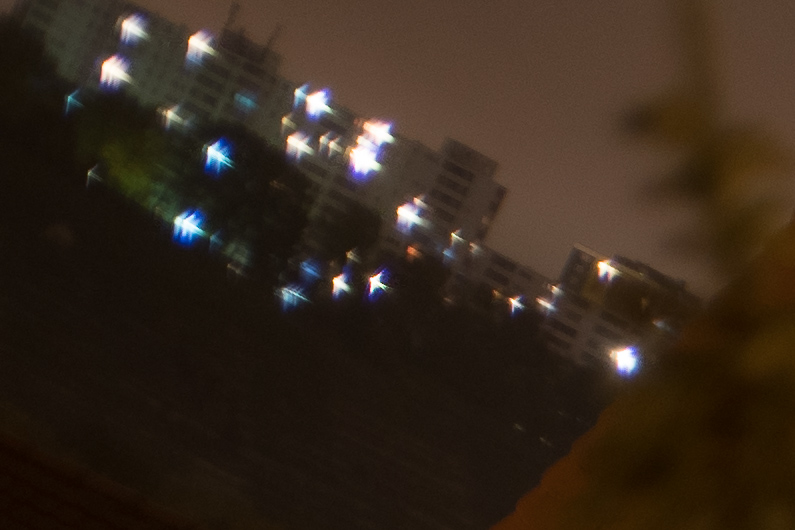
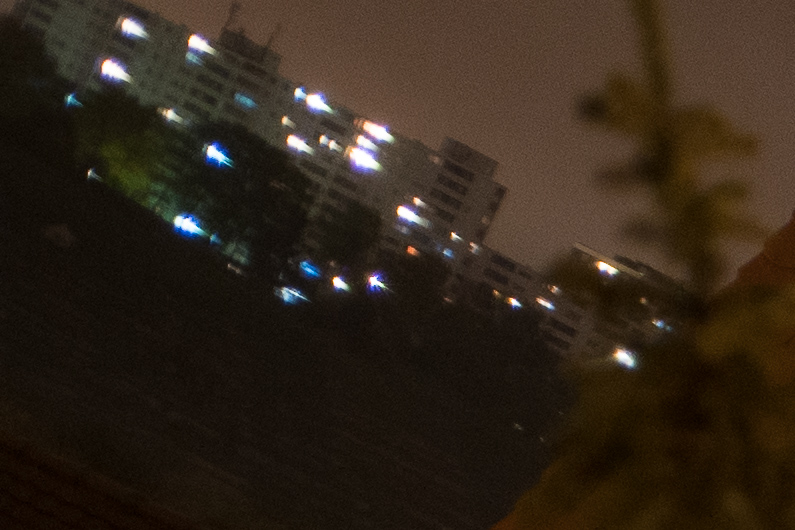


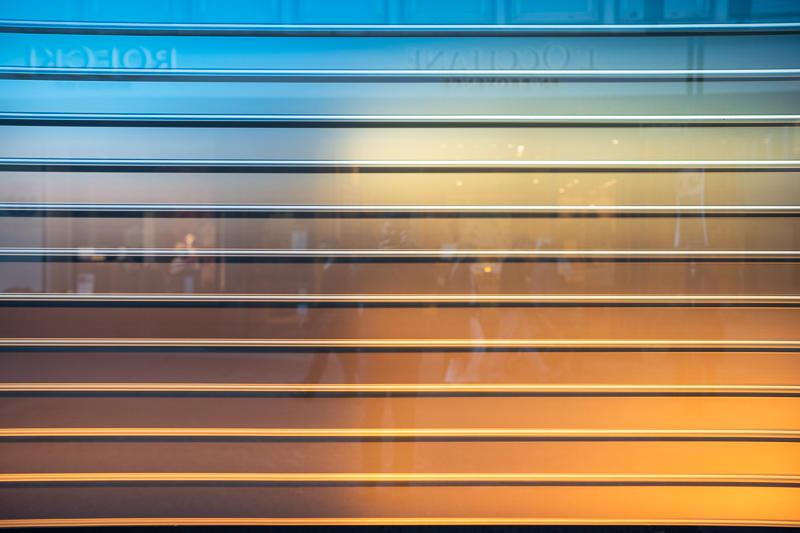
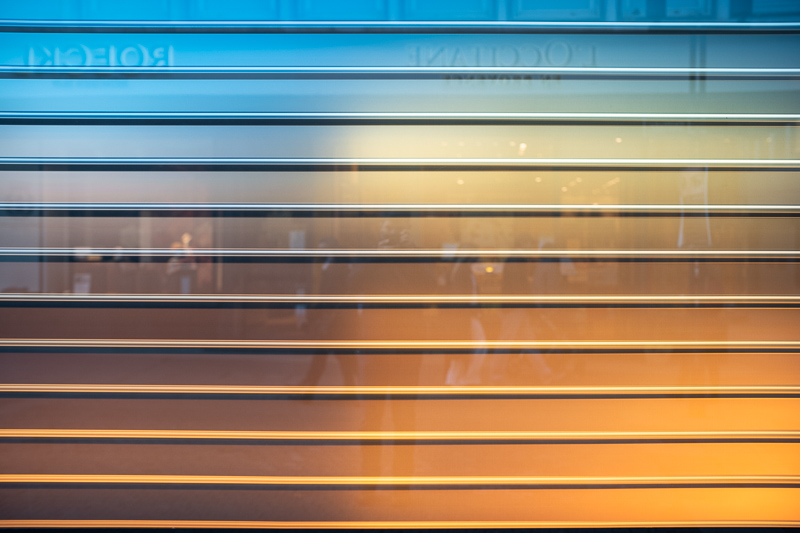
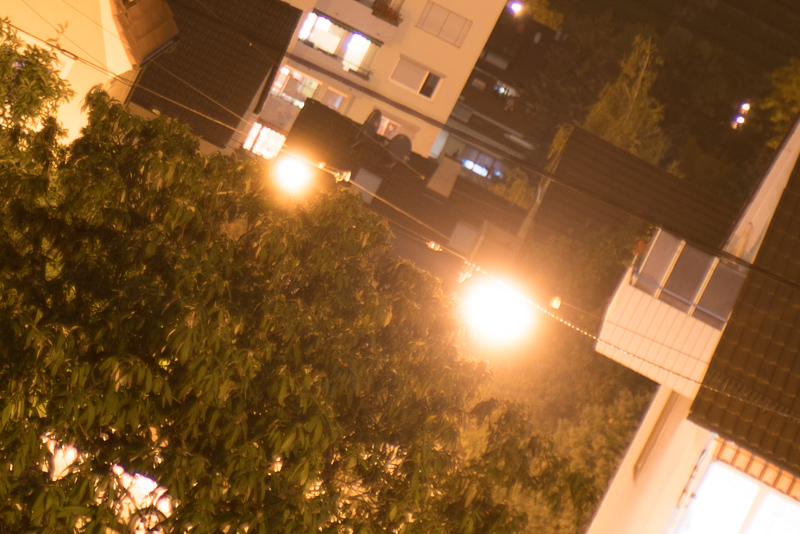
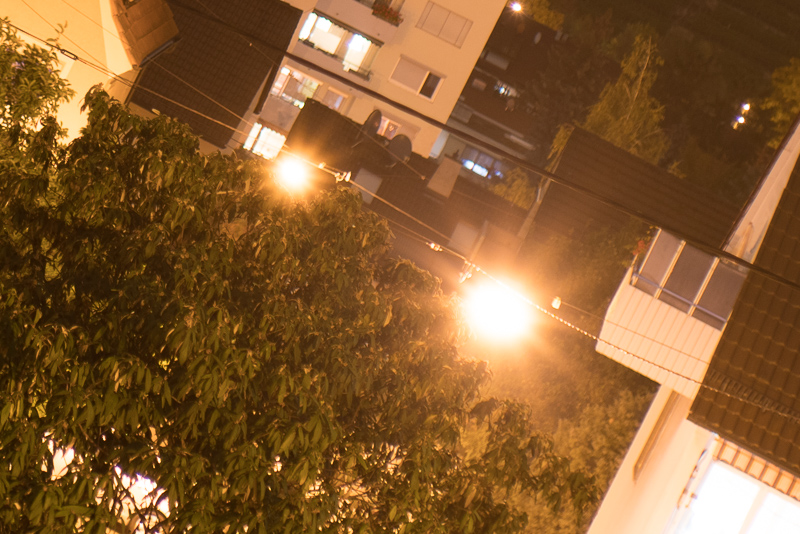
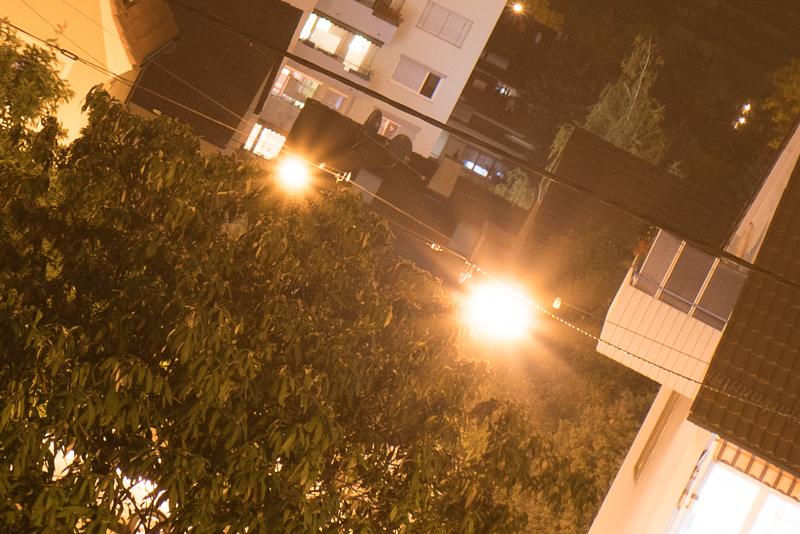
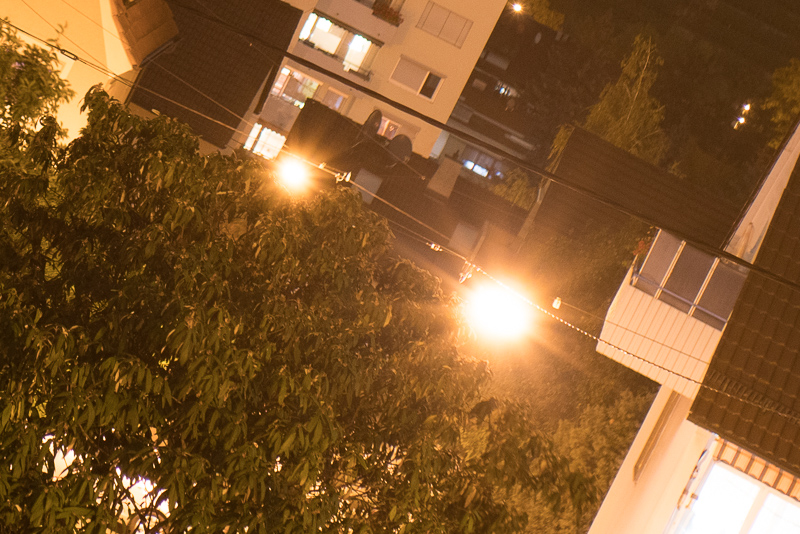
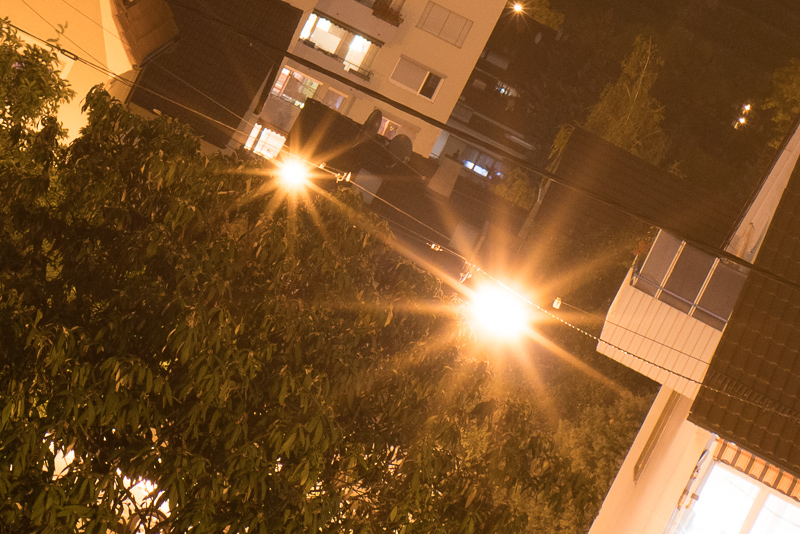
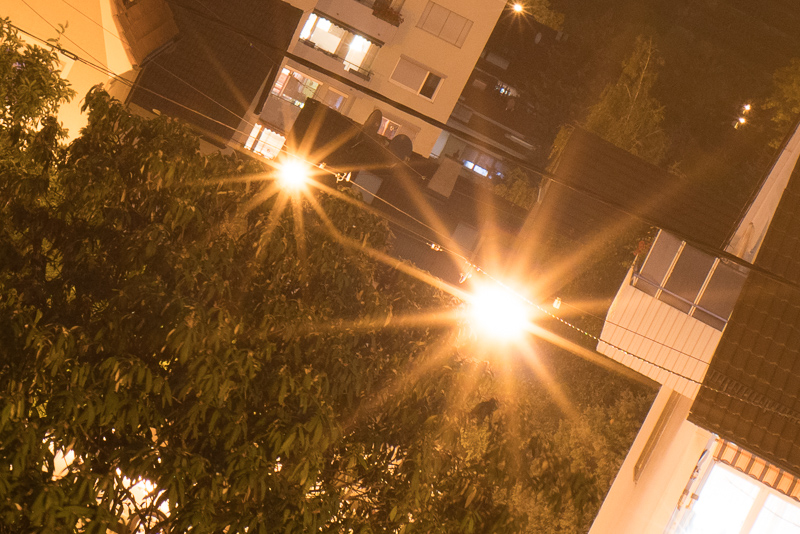
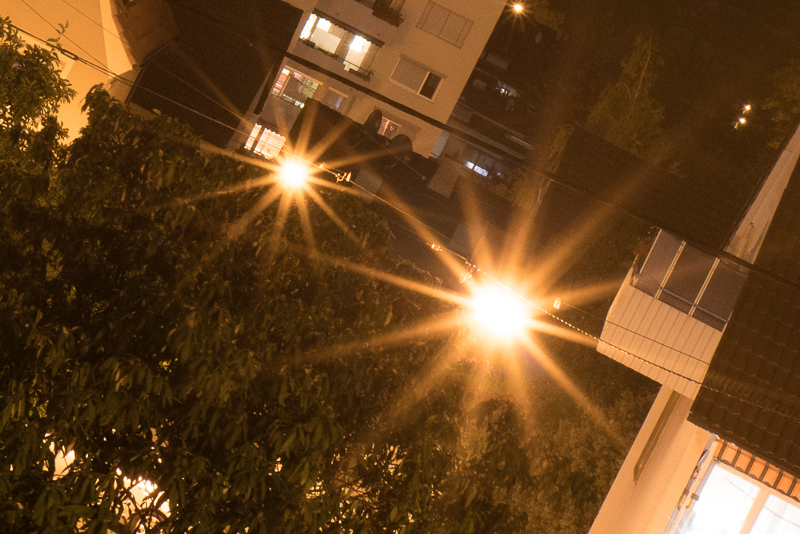
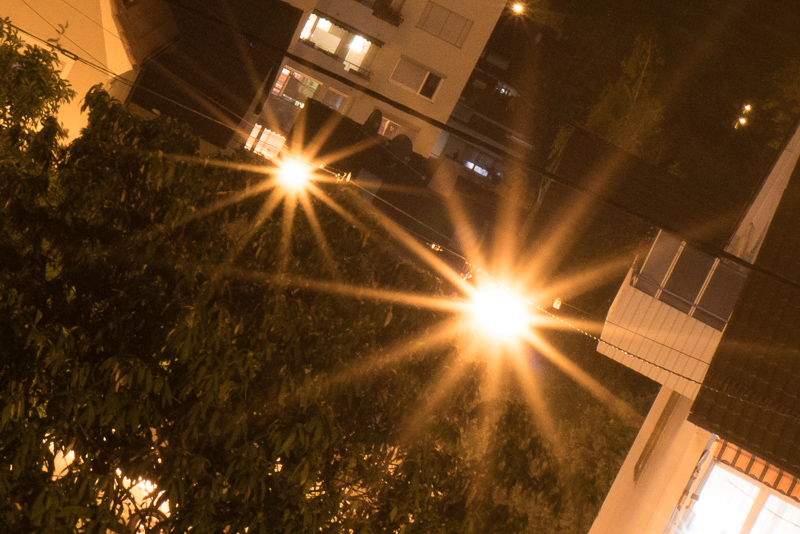
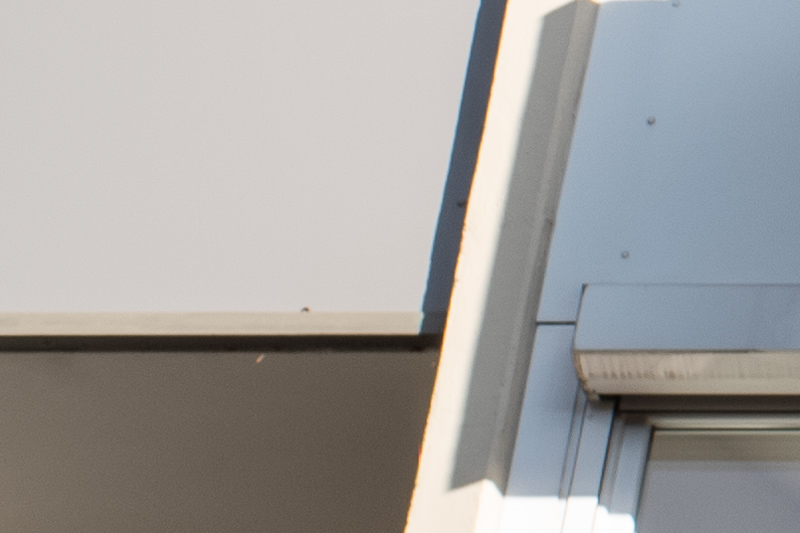
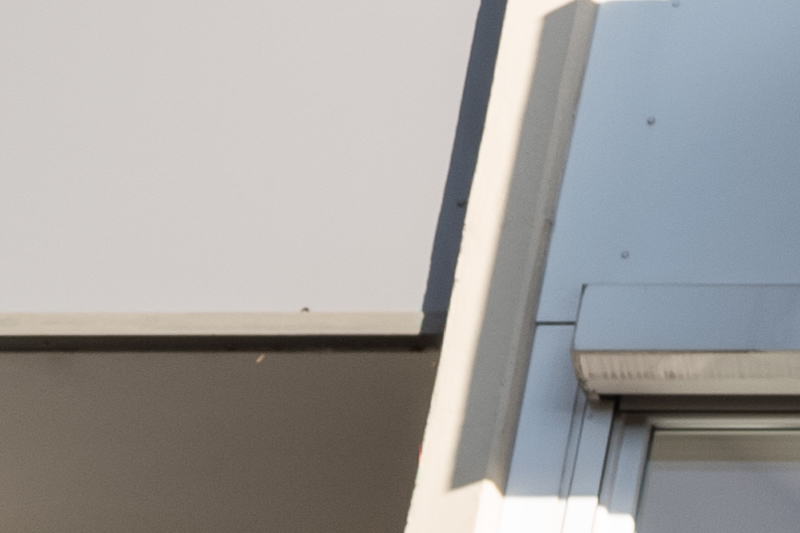

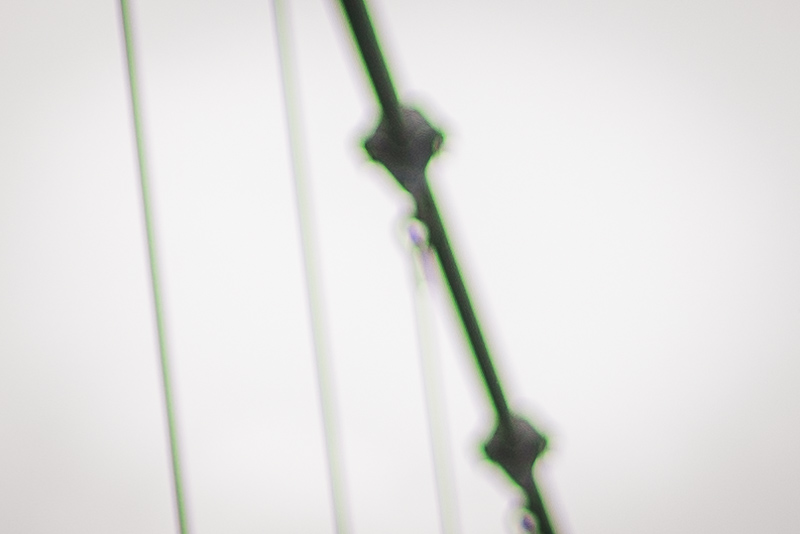

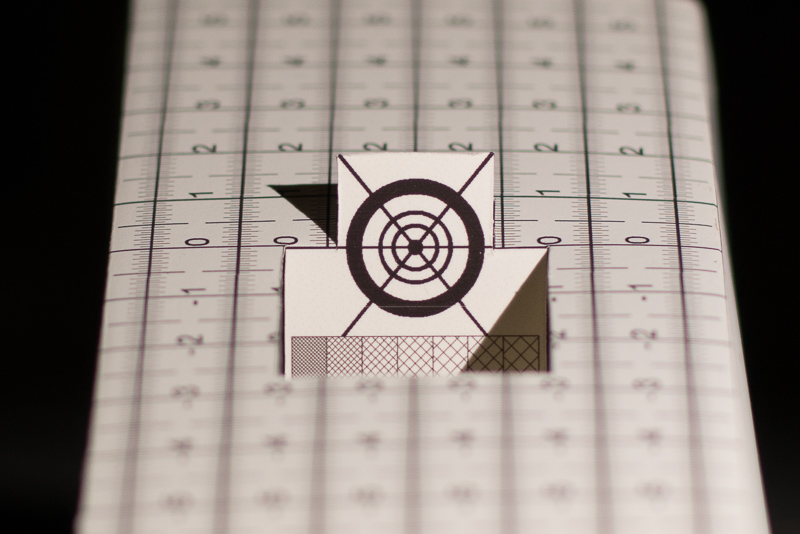


I am also happy with my version E received a few days ago. I think that there is less and less sense in old film 50mm lenses.
Well, I guess I will be getting this lens. Voigtländers might be better for my use cases, but I can’t really justify their prices.
I’m a bit worried about some things though. My current go to 50mm is the cy zeiss 50 1.7 and while it has rather annoying characteristics such as bokeh outlines and rather strong aberrations, it’s still supposed to be one of the better vintage lenses. And there are some reviews of TTartisans/DJI Optical lenses which mention decentered optics. This is pretty much what I’d expect from a cheaper chinese 3d party manufacturer, but dealing with returns is still not fun.
Thanks for all the effort you put into this website. I’ll use a referral for this in a few days.
Guess chances to receive a dud are still higher with 30 years old used lenses and returns are often not possible at all.
Seems like there might be a slight midzone dip due to a wavy field curvature.
Sharpness-wise, I wonder, how is good old Canon FDn 50/1.4 fares against new lenses like these on 42Mp.
the FD 1.4/50 is probably gonna suck in comparison especially wide open and up to f4. From f5.6 the Canon is a very capable landscape lens, but generally bokeh is not very smooth. So for around 3x the money, the TTartisan seems like a real bargain.
I don’t think it is possible to get a good copy of the FD 50mm 1.4 for less than 140€ anymore…
Mint copies of the FD still sell for on ebay below 90€ in auctions from what i’ve found (no return possible ofc).
I orderded the TTArtisan for 295€, so i will report here when i found the time to compare if it was a worthwhile investment for me (thats what i expect).
i’ve compared them briefly. sharpness is similar, slightly better stopped down on the FD. Wide open the FD has some wierd rendering and field curvature problems, making it practically unusable. The ttartisan is decent wide open and bokeh much smoother, but when stopping down the bokeh rendering becomes similar between both. CA is pretty severe on both. TTartisan flares easily and needs a hood, making it pretty long, while already being pretty heavy.
So i’d say if you look for a cheap 50 for stopped down landscape, go for the FD (or any cheap legacy 50).
If you want a small manual 50 for wide open portrait photography the ttartisan is the best option, since most other legacy 50 dont offer smooth bokeh wide open (not even the expensive f1.2 50ishs).
This is really interesting. Just checked the MTF charts for canon 50 1.4 as it seems to have the same optical formula with the FD and the chart seems to back these claims. Performance of the FD and it’s derivatives should increase a bit faster than TTArtisan when stopped down. Partly because there’s more to improve and partly due to f5.6/f8 performance being a bit better. Not that these charts would tell the whole story and all, but still interesting.
Thanks for the nice review Bastian! Very nice, beautiful photographs. I like a lot the colors (the reds are very nice) and the aesthetics of your photographs. Was it Istanbul? What color profile are you using?
Thank you very much!
I shared how I edit my pictures in this article.
Danke fürs Review.
Gibts eine Empfehlung für eine Bezugsquelle in Deutschland?
195,- aus China auf ebay, dann vermutlich mit Zoll 239EUR und 4 Wochen Versand. Auf Amazon 297,- auch von chin. Händler, aber ohne Zoll und verm. schneller Lieferung.
Photospecialist (aus Holland) hat es für 299€ lieferbar.
Scheinbar schlagen die europäischen Händler mal wieder ordentlich auf, mehr als 240€ sollten es ja eigentlich nicht sein, trotz Steuern.
als chin. Import sollten es für Objektive 6,7% zoll und 19% USt sein.
Ich denke das fällt beides auf den Grundbetrag an, sollte also so 245,- ergeben.
Danke für den Tipp, schau ich mir an
TTartisan remains to” roll out ” a compact with a good rendering of 90/2.8 and it will be an excellent kit.
Thanks for your review. Very interesting and usefull as usual.
According to your analysis, it seems that the M version with a helicoid adapter would be a very good option due to the possibility of focusing even closer.
That is a good option, but I guess only if you already have a helicoid adapter, otherwise the price difference becomes really substantial.
Great review. If this lens had electrical contacts I would consider it, but without I’m sticking with my Nikon 50 1.4.
Yeah pretty nice little lens it looks like. It’s V hard to justify spending $1k on a voigtlander 50/1.2 when you have this lens, though, for a fast standard prime I have a strong preference for my F mount Nokton 58/1.4. I much prefer that focal length and it has better rendering abilities than even the V 50/1.2 and can be found for under $500. The only other 50mm 1.4 lenses I think that could compete in the price / performance range would be zeiss c/y, takumar, or Nikon ai-s. I wonder what else we can expect to see from tt-a or other budget-leica brands in e Mount going foreward? Maybe a 21mm, 40mm, 55mm, 75mm, or 85mm?
Bonjour
Thanks for this interesting review!
Can you please tell me if it’s worth to buy for a longtime I do already have the 50mm Loxia.
I seldom use it at f2.0, so I do not need f1.4…
If you are shooting mostly stopped down I see little reason to change, the Loxia is a really good lens stopped down.
Hey guys, promising results and good price
Though I have to say, I’m kinda disappointed by the “review”. most of the photos for the analysis were taken directly from the M mount review.
I know that the lens is supposed to be optically the same, at least on paper. But I would have expected the lens to be tested and reviewed in a review.
As is already written in the intro “This lens is optically the same as the M-mount version so I will reuse many sections of my review of the M-mount version here.”
My time is limited and I will not waste it reviewing the same lens twice.
So I cover the important changes (improved MFD, therefore new sharpness test at 0.5 m), ran a new sharpness infinity test to check if there are differences (nope), check if anything about flare resistance changed (not the case) and add plenty of samples taken with the E-mount lens on an E-mount camera.
Alex, it’s not optically the same “on paper”. The optics are exactly the same. Bastian’s review covered the differences and he provided an update of the minimum focus distance sharpness and infinity sharpness. To review all other aspects of a lens he has already reviewed would be redundant and a waste of time. If you want to double review lenses, start your blog/review site.
Great review and very nice pictures!
Are you planning a test of the Sony 50mm 1.2 GM?
This should also be included in your Guide to 50mm lenses 🙂
David bought one afaik so we might be getting a review as well 🙂
This 50mm paired with the 7artisans 28mm 1.4 would make a small and (relatively) inexpensive MF kit with really nice rendering. Maybe we’ll see a similarly priced and sized 90mm in the future to round off the kit.
Yes, those two are a really good fit to each other and I am also hoping for a nice affordable 90mm 🙂
Speaking of affordable portrait lenses, have you had or do you plan to have any experience with the Mitakon 85mm f2? I’ve always had high regards for Mitakon and they make a tiny cheap 85mm f2 but not sure if it’s really worth buying
I tend to mostly stay away from DSLR designs these days, but I will check the specs of that one.
Those pictures are really really great. For you, the lens or camera body does not matter. You can take great pictures with any combination. Really adorable. Keep the good work
Thank you, but I failed to manage taking pictures at wide apertures I like with e.g. the Voigtlander 35mm 1.4 Classic and also slow tele lenses like the Leica 135mm 4.0, 135mm 3.4 or the Nikon 75-150mm 3.5 I find very “uninspiring”.
TT artisan lenses have Leica / old Zeiss feeling, something special.
Something behind a sharpens charts.
Hard to explain but very pleasing feeling.
Unlike mostly modern lenses, they have super sharpness, high quality lens, etc but at the end images are deadly flat.
Just got the lens from China I was a bit surprised that it’s even smaller than my Sony apsc 50 1.8 oss, handling is just perfect and it seems to outperform the cy zeiss 50 1.7 in most aspects. And the sunstars are just amazing. I haven’t had a lens with this nice sunstars before.
Shame that the coatings are a bit “tokina like” for the lack of a better word. Off center sources of light cat at times have small rainbows around them even when at f6.7 which I presume to be the f value for the best sunstars with the lens. But I’m still happy with it as the lens is so much better than my previous 50’s were.
Glad you like it 🙂
I received a copy of the Ttartisan 50mm 1.4 FE in late August through Amazon but returned it as it was decentered more than I was comfortable with. I finally got a second copy from B&H today and it’s even more decentered than the last one. I want this to use stopped down as well as at f1.4 so having a reasonably centered copy is a must. What’s your experience with this manufacturer? Should I try for a third or am I unlikely to get a decently centered lens?
Out of 6 lenses I didn’t receive a decentered one, but 6 is still a low number so I don’t feel informed enough to make claims here.
Well 6 out of 6 sounds like there is hope then. I’m not looking for perfection, just decent. I’ll exchange this one. Thank you.
I REALLY like the lens otherwise. Very well made, the part that’s sharp is surprisingly sharp at 1.4 and by f4 it’s tack sharp to my eyes on 42mp.
omg this lens. i felt I’m on my 85mmGM. this will replace my 35mm2.8 zeis. I’m new at manual lens but i really enjoy it alot. thanks for the review sir. really helps alot
Bastian,
The manufacturer’s website lists a TTArtisan 50mm F1.4 ASPH. Is this the same lens?
Thanks
Yes!
Thank you 🙂
Two questions:
– How does this lens compare to the Minolta MD Rokkor-X 50mm f1.4 and the Konica Hexanon 57mm f1.4
– Is the loss in corner performance for the M-mount version on Sony noticeable enough to prefer the FE version over the M version+TechartPRO LM-EA9 adapter?
I also have 2 questions:
-Which do you think is the better overall lens? This lens or the Mr Ding 50mm 1.1
-Will the M version work good with Techart autofocus adapter?
Depends a bit. I value smooth bokeh higher, so for me it is the Mr. Ding.
Someone who values contrast higher may prefer the TTartisan.
Also haven’t tried the TTartisan with the Techart yet,
but the Mr. Ding is one of only very few lenses I tried that works really great with it, so will be hard to beat.
Picked up an open box deal on one of these for the A7RIII a couple of days ago. It’s as new, in box, £109 inc. delivery.
I’ve owned (and sold apart from four) around fifty lenses. No lens has brought me deep joy as this TTartisan 1.4/50 ASPH has.
It has a few flaws, but nothing to write home about.
I have made improvements to this thing this afternoon.
49>58mm step up ring.
20mm long 58mm tube lens hood with 58mm female thread.
A large 58mm collapsible rubber hood on the end of the tube hood.
It’s on the absolute limit before it causes a vignette.
Wide open, the hint of spherochromatism has gone, the contrast and seemingly, the saturation, have vastly improved. Colour noise also seems to have improved. The hint of bloom in the bokeh transition has disappeared.
Total hood length is 70mm.
It looks ridiculous. But then I look ridiculous, so it makes no odds.
I’ve just bought it new as my first native e-mount lens for my newly acquired A7 MkI, as I’m fed up with years of micro 4/3 rendering which I find supbar.
I have found two things quite distracting:
– the lens focuses past infinity, as this behaviour seems to be normal as far as I understand, has anyone already adjusted it with the 3 screws around the focusing ring, and should it be done at all (maybe considering temperature variations)?
– the focus ring is really stiff (albeit very smooth), I have to apply quite a lot of torque and found that the mount being far smaller than the mount ring on the camera providing a small contact area with the mount (replaced for this exact reason with the Fotodiox Tough e-mount LT) and the locking pin groove being quite large, the lens rotates and bangs on the pin each time I’m not reaaaaly slow with my focus adjustment. It’s not deal-breaking, but is this a common experience?
Also, if I reaaaly want to I can wiggle the lens up&down and to the sides, it slightly moves. I can also do this with my K&F adapters, but way less.
To sum up, I find the mount on this lens too “small” in many aspects considering the stiffness of the focusing ring.